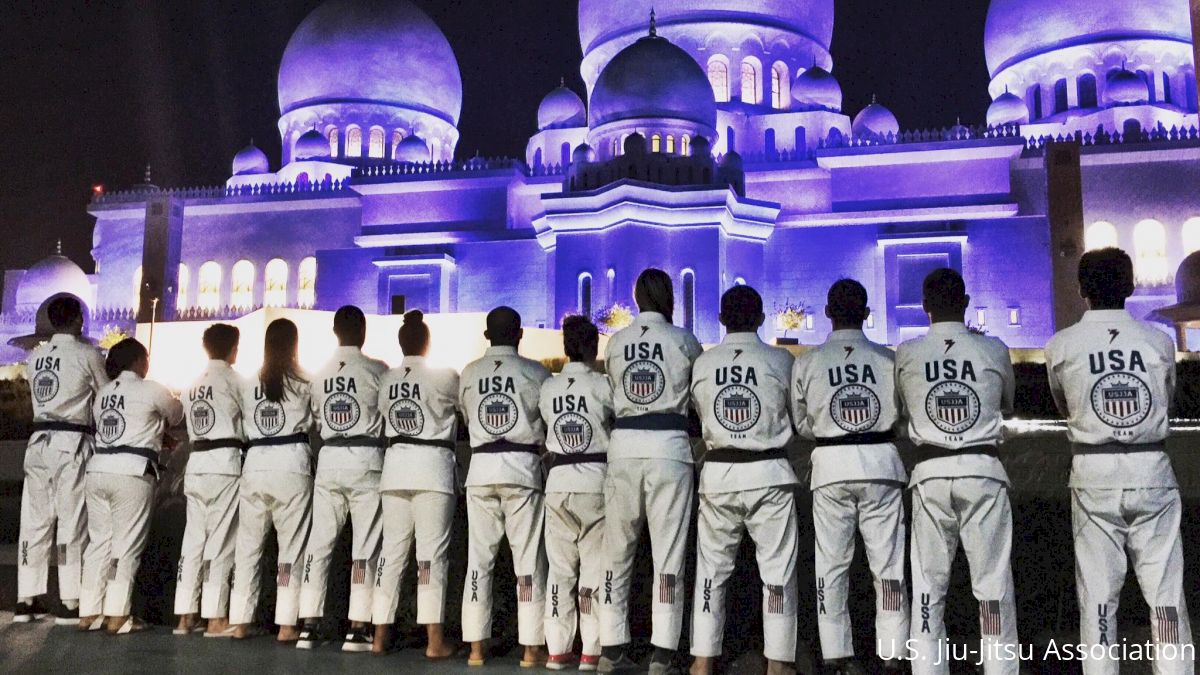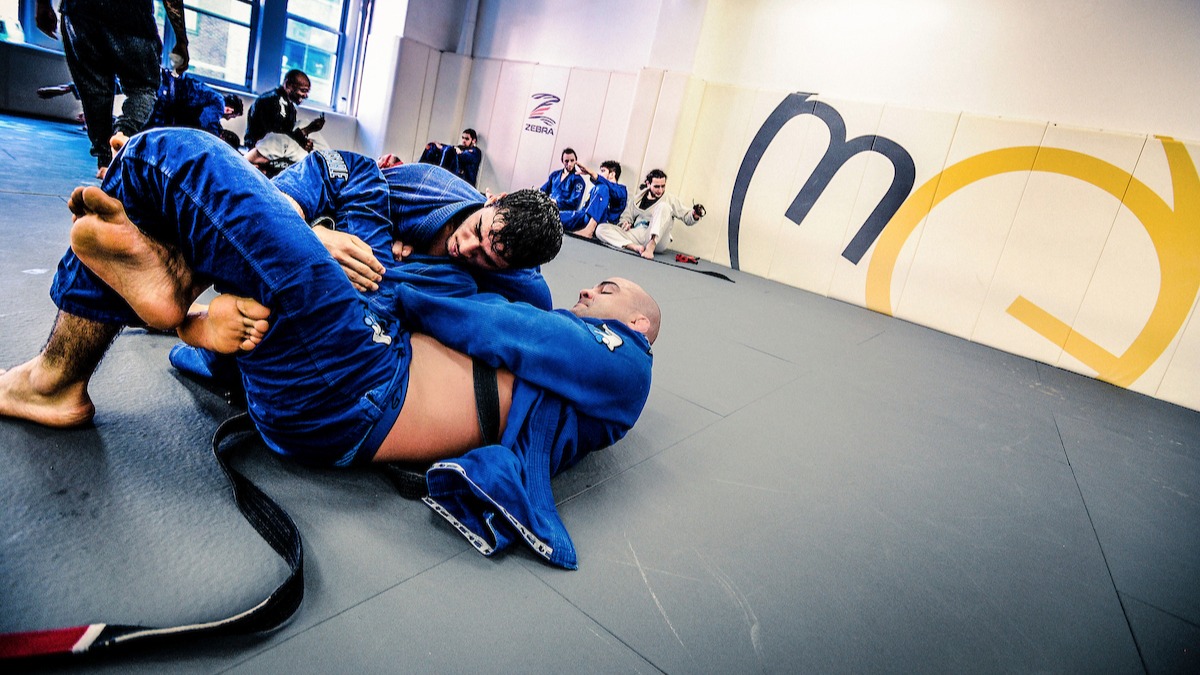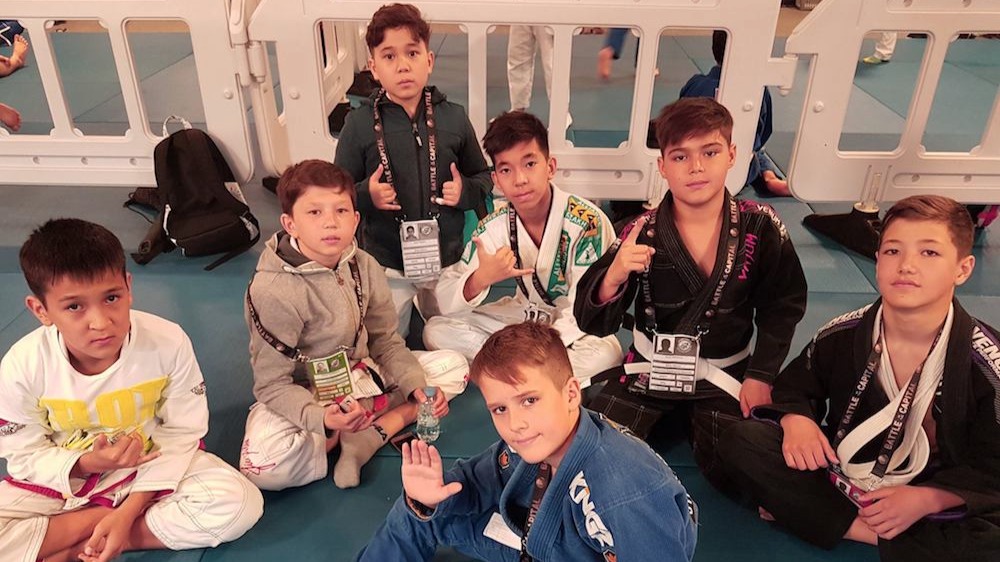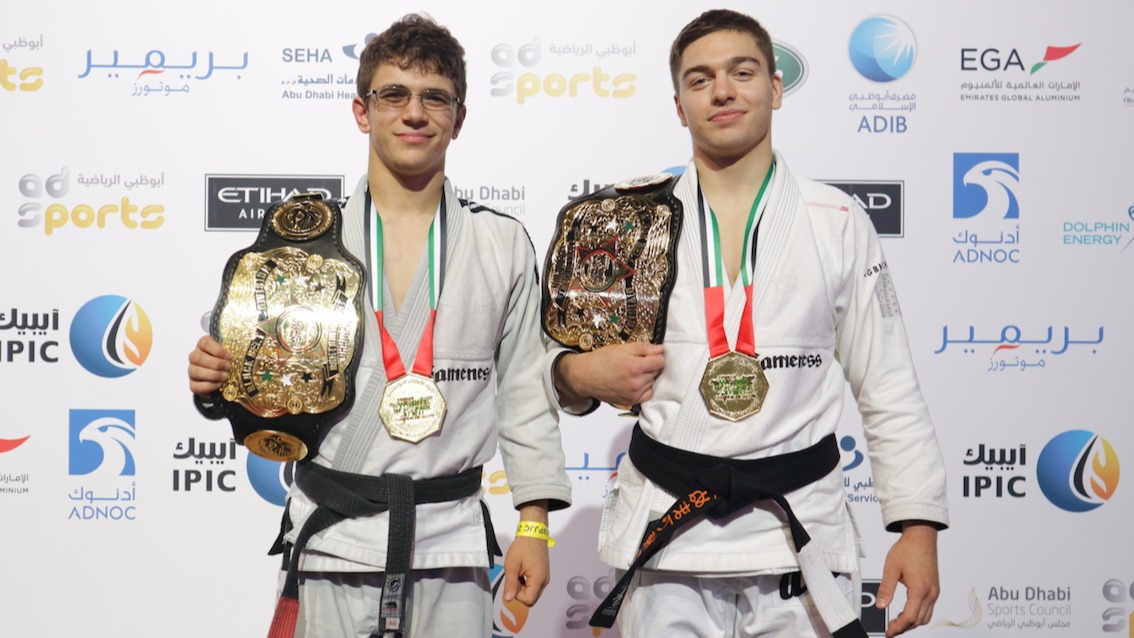How Can The USA Become #1 Jiu-Jitsu Power In The World?
How Can The USA Become #1 Jiu-Jitsu Power In The World?
I want to say that I believe the U.S. is already heading in the right direction. Every year we continue to see more and more young American athletes reaching the podium at Pans (some winning) and at Worlds. But, they still just haven't gotten over the hum

Gianni Grippo writes for FloGrappling about how the U.S.A. could become #1 in the world in jiu-jitsu.
The Abu Dhabi World Pro has always been a tournament that emphasizes the country you come from rather than the team you represent. This is evident even in the days prior to the actual tournament as it is one of the few times athletes from other teams train with each other on neutral mats -- whether they represent Alliance or CheckMat or Atos.
This past edition of the World Pro had an even greater emphasis on country representation as both the U.S.A and Brazil formed their own national teams, distributing uniforms for all competitors to wear (barring other sponsorship obligations.) The emphasis was also seen with the addition of the qualifier brackets, a new addition to the tournament making it so that there would be no more than two competitors from a country in any bracket in the brown and black belt categories.

The podium of the Abu Dhabi 2017 World Pro. Grippo (far left) and Mikey Musumeci (far left, seated) are the only two non-Brazilians. Photo: UAEJJF
With this new system in place, there were some competitors from the U.S. and the U.K. that had to battle it out, but the Brazilians definitely had a tougher time. Some of the qualifying brackets looked just like Worlds or Pans they were that deep!
Even with the early elimination of many high-level Brazilian brown and black belts, it didn't stop them from taking the majority of the gold medals as they won five of the seven male black belt and male brown belt divisions, and swept all five of the women's brown/black belt titles.
Related:
• World Pro male brown belt results
• World Pro male black belt results
• World Pro female brown/black belt results
So, the question is what does the U.S., as clearly the #2 country to Brazil, need to do to become #1?
Before answering this, I want to say that I believe the U.S. is already heading in the right direction. Every year we continue to see more and more young American athletes reaching the podium at Pans (some winning) and at Worlds. But, they still just haven't gotten over the hump, yet.
Here are some things that need to happen in order for the "changing of the guard" to finally come to fruition.
Winning can lead to sponsorships, superfights, and maybe a teaching gig down the road. In short, (most) Brazilians are hungrier because it isn't just a hobby or something to do after work or school -- for many it is important for their livelihood, so the sport is everything to them.
I don't want to say that we should strip U.S. competitors of everything they have and they should quit their jobs or quit going to school, but perhaps some more financial help for those who are serious about competing can help the individual focus more on jiu-jitsu and less on everything else they are responsible for in their lives. We see this with sponsorship deals, but mostly only when athletes reach the brown and black belt levels. If there are more opportunities for the younger kids in the teens and juvenile divisions to focus on jiu-jitsu then they can someday be the one's to dominate at the black belt level.

A typical training session at Grippo's home gym, Marcelo Garcia Academy in New York. Photo: Ric Ricard
This doesn't mean that the hobbyist doesn't want to be pushed. I see that there are a lot of schools that don't really have competition training or have sessions that are meant to push your cardiovascular endurance, because the majority of students are just looking to do jiu-jitsu for fun.
But why can't fun be tough? I believe that if someone works a 9-5 job they'd want something that'd make them sweat and make them push themselves to limits they never thought they could reach. Nothing is more satisfying that realizing you could go further than you never thought imaginable.
With this, I feel that the training sessions should be catered more towards the competitors in the room and should be a challenge, and I feel that many of the non-competitors will appreciate the push too.

Junior competitors at the Abu Dhabi 2017 World Pro. Photo: UAEJJF
Like I stated before, the road to becoming #1 won't happen by focusing more of our attention on the already-seasoned black belts, it'll come by building up the youth and instilling jiu-jitsu in them at a young age.

Mikey Musumeci (left) and Gianni Grippo with the 2017 Abu Dhabi World Pro gold medals and titles belts. Photo: Hywel Teague / FloGrappling
Despite the Brazilians' dominance of the black belt categories at the World Pro, both myself and Mikey Musumeci were able to win our respective weight classes -- because we were given extra attention over the past few years, but because jiu-jitsu has been such a big part of our lives for as long as we can both remember.
While I started at the age of 10 Mikey and his sister Tammi started at age of 4, and with that early of a start it's hard not to eat, breathe and sleep jiu-jitsu. Other great champions like Dominyka Obelenyte and Mackenzie Dern started at near infancy stages and that early start is what propelled them to prominence at the higher ranks. Now just imagine how much better the next generation can be if jiu-jitsu weren't just an out of school activity?
• The Erosion of Brazilian Dominance: World Pro Medals By Country
The Abu Dhabi World Pro has always been a tournament that emphasizes the country you come from rather than the team you represent. This is evident even in the days prior to the actual tournament as it is one of the few times athletes from other teams train with each other on neutral mats -- whether they represent Alliance or CheckMat or Atos.
This past edition of the World Pro had an even greater emphasis on country representation as both the U.S.A and Brazil formed their own national teams, distributing uniforms for all competitors to wear (barring other sponsorship obligations.) The emphasis was also seen with the addition of the qualifier brackets, a new addition to the tournament making it so that there would be no more than two competitors from a country in any bracket in the brown and black belt categories.

The podium of the Abu Dhabi 2017 World Pro. Grippo (far left) and Mikey Musumeci (far left, seated) are the only two non-Brazilians. Photo: UAEJJF
With this new system in place, there were some competitors from the U.S. and the U.K. that had to battle it out, but the Brazilians definitely had a tougher time. Some of the qualifying brackets looked just like Worlds or Pans they were that deep!
Even with the early elimination of many high-level Brazilian brown and black belts, it didn't stop them from taking the majority of the gold medals as they won five of the seven male black belt and male brown belt divisions, and swept all five of the women's brown/black belt titles.
Related:
• World Pro male brown belt results
• World Pro male black belt results
• World Pro female brown/black belt results
So, the question is what does the U.S., as clearly the #2 country to Brazil, need to do to become #1?
Before answering this, I want to say that I believe the U.S. is already heading in the right direction. Every year we continue to see more and more young American athletes reaching the podium at Pans (some winning) and at Worlds. But, they still just haven't gotten over the hump, yet.
Here are some things that need to happen in order for the "changing of the guard" to finally come to fruition.
Jiu-jitsu needs to become a greater focus for the individual
I always remember being told by my first coach, Magno Gama, that Brazilians will continue to dominate the sport because for many it is all that they have. Many competitors don't come from wealthy backgrounds so their competition results are even more vital to their survival.Winning can lead to sponsorships, superfights, and maybe a teaching gig down the road. In short, (most) Brazilians are hungrier because it isn't just a hobby or something to do after work or school -- for many it is important for their livelihood, so the sport is everything to them.
I don't want to say that we should strip U.S. competitors of everything they have and they should quit their jobs or quit going to school, but perhaps some more financial help for those who are serious about competing can help the individual focus more on jiu-jitsu and less on everything else they are responsible for in their lives. We see this with sponsorship deals, but mostly only when athletes reach the brown and black belt levels. If there are more opportunities for the younger kids in the teens and juvenile divisions to focus on jiu-jitsu then they can someday be the one's to dominate at the black belt level.

A typical training session at Grippo's home gym, Marcelo Garcia Academy in New York. Photo: Ric Ricard
Teams can focus more on competition-style training
In refute to this, I always hear gym owners tell me that, "the hobbyists are the ones that help pay the bills, not the competitors," and I know that's totally true. Especially if you help sponsor some of your competitors, the non-competitor is the only thing keeping your gym afloat.This doesn't mean that the hobbyist doesn't want to be pushed. I see that there are a lot of schools that don't really have competition training or have sessions that are meant to push your cardiovascular endurance, because the majority of students are just looking to do jiu-jitsu for fun.
But why can't fun be tough? I believe that if someone works a 9-5 job they'd want something that'd make them sweat and make them push themselves to limits they never thought they could reach. Nothing is more satisfying that realizing you could go further than you never thought imaginable.
With this, I feel that the training sessions should be catered more towards the competitors in the room and should be a challenge, and I feel that many of the non-competitors will appreciate the push too.

Junior competitors at the Abu Dhabi 2017 World Pro. Photo: UAEJJF
Putting jiu-jitsu in schools
While I feel like we're still a far way off from this ever happening, one thing that would definitely help the growth of jiu-jitsu in the U.S. would be to put jiu-jitsu in school either as an extra curricular activity, as an elective class or as a part of the curriculum in gym class.Like I stated before, the road to becoming #1 won't happen by focusing more of our attention on the already-seasoned black belts, it'll come by building up the youth and instilling jiu-jitsu in them at a young age.

Mikey Musumeci (left) and Gianni Grippo with the 2017 Abu Dhabi World Pro gold medals and titles belts. Photo: Hywel Teague / FloGrappling
Despite the Brazilians' dominance of the black belt categories at the World Pro, both myself and Mikey Musumeci were able to win our respective weight classes -- because we were given extra attention over the past few years, but because jiu-jitsu has been such a big part of our lives for as long as we can both remember.
While I started at the age of 10 Mikey and his sister Tammi started at age of 4, and with that early of a start it's hard not to eat, breathe and sleep jiu-jitsu. Other great champions like Dominyka Obelenyte and Mackenzie Dern started at near infancy stages and that early start is what propelled them to prominence at the higher ranks. Now just imagine how much better the next generation can be if jiu-jitsu weren't just an out of school activity?
Becoming #1
The U.S. is already closing in on Brazilian dominance; that is evident. But there is more that can be done. I firmly stand with the idea that the build-up towards being #1 must start with the youth and make it a big part of their lives the way many young Brazilians have. With more attention and by making the sport bigger than just something to do outside of school, the next generation of American black belts can finally be the ones to get the U.S. over that hump.See also:
• World Pro 2017 Analysis: Black & Brown Belt Medals Broken Down By Country• The Erosion of Brazilian Dominance: World Pro Medals By Country